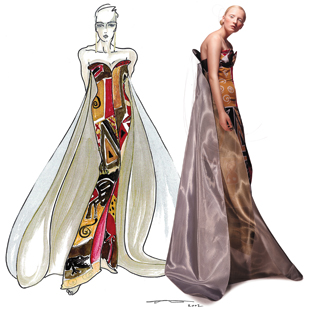Science outreach doesn’t have to take place in a squeaky clean museum or classroom or theatre hall; it can place in the unhygienic and dirty outdoors. Zoe Cormier in her June 30, 2011 posting on the Guardian Science blogs describes it this way,
It ended for one man with a weeping confessional about how much he missed his mum. Another told us he had a shameful preference for instant coffee. A few couldn’t remember their own names. Many screamed at the top of their lungs into the microphone. Quite a few got naked in the glow of pink neon before we swabbed them down with wet wipes
The scene was the 2011 Glastonbury Music Festival and the science outreach was performed by a group calling itself Guerilla Science (more from the Cormier posting),
It began at the entrance to a giant white cube, the Decontamination Unit, amid the muddy mess of Glastonbury. Bewildered guests – who thought it was a night club – were greeted by two guides in biohazard suits, who led them to a Microbial Zoo: an array of colourful Petri dishes bearing swirls and stripes and spots of rainbow-coloured bacteria.
Some of the strains produced these artful patterns all on their own. Proteus mirabilis, with to its whip-like tails, swims in circles at high speeds through the agar, producing concentric rings.
“Drawing people in like this helped them to learn that you really wouldn’t be able to live without these ‘dirty, disease-causing things’,” says Sarah Forbes, a microbiology PhD student at the University of Manchester, who grew the plates. She gives the example of Staphylococcus epidermidis, which lives on our skin and prevents other more virulent bacteria from taking hold.
Appearing at Glastonbury isn’t Guerilla Science’s only project, they are presenting a Dirt Banquet (at the Secret Garden Party, July 21-24, 2011). The Dirt Banquet will take place on July 22, 2011. From the Guerilla Science website homepage,
Working in partnership with chef Joe Gray, Guerilla Science will host a Dirt Banquet on the evening of Friday July 22 at the Secret Garden Party at sunset – the second and last time we will host this unparalleled experience. The first was held inside London’s unrivaled Crossness Pumping Station with experimental food artisans Bompas & Parr.
As before, this feast of filth will showcase dirty delicacies such as radioactive cheese serum, ambergris, Islay whiskey, and an aphrodisiac dessert – each course inspired by the physical, biological, ethical, architectural, social, political and temporal dimensions of dirt. Full menu, which will vary from the Crossness feast, will be announced a week before the date.
Eminent experts will accompany each course, feeding guests with ideas about the nature of dirt. Neuroscientists Zarinah Agnew and Aidan Horner will introduce us to the dirty bits of the brain. Gastronomist Rachel Edwards-Stuart, former apprentice of Heston Blumenthal, will accompany canapes. Epidemiologist Elizabeth Pisani, author of The Wisdom of Whores … , wh0 will speak on sexuality over dessert. And beatboxer Yasson will serenade us with the snarling trills of the spiralidoo.
Here are a few more details about Guerilla Science’s plans for their day at the Secret Garden Party,
As always, we will hold court at one of the UK’s most colourful and riotous music festivals, the Secret Garden Party.
For our fifth first-class year we will celebrate with four days of explosions, brains, balloons, showdowns and sounds, complete with (in imagination-perfect-land), a 150-person capacity tent, a zoo, an island and a boat.
…
In the meantime, we can tell you this: funded by our most generous benefactors the Wellcome Trust as part of their Dirt season of events, we will host a Dirty Day of filthy good fun.
I notice that this description on the Guerilla Science website was written by Zoe, I wonder if that’s Zoe Cormier, the writer of the piece in The Guardian. ETA July 13, 2011: Yes, Guerilla Science Zoe is the Zoe Cormier who wrote for The Guardian. She also let me know that she’s Canadian and has had some pieces published in the Globe and Mail, including this one about frogs (how could I resist?).
I like this approach and found the contrast between this creative, fun science outreach for adults as opposed to the more lecture-oriented, sober style of science outreach found in Vancouver (and, as far as I can tell, the rest of Canada too) quite striking. In Canada, the fun is usually saved for the kids.
Here’s a little more about Guerilla Science,
We mix science with art, music and play.
Every summer throughout London and the English countryside thousands of people discover our installations, films, music, live demonstrations, interactive experiments, debates, games and talks at music festivals and arts events around London.
I hope the July 21, 2011 Dirt Banquet and their other Secret Garden Party events are a great success and if I were in the UK, I’d definitely check this out (provided it’s not sold out).
